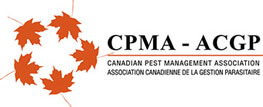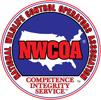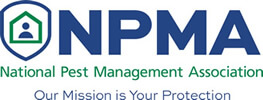Professional Wasp Exterminator – Calgary – Stinging Insect Removal
403-475-6523
Peregrine Pest Control – Hornet Removal – Calgary & area
All our bee treatment technicians are licensed applicators in the province of Alberta.
Peregrine Pest Control is Quality Pro Certified and ISN Certified.
*Our Calgary stinging insect removal team has 60+ years of combined experience
Check out the Peregrine Pest Control team here
WHAT TO LOOK FOR

Bumblebees: are important pollinators and are used for agricultural purposes (pollinating plants that other species of bee are too small to access). Bees are beneficial, as they are important pollinators. As a rule, if a nest is located on the back of a property, in an out-of-the-way area, leave it alone. If the nest is under a front step or a back deck and there is a real safety hazard, then contact your pest control service technician at Peregrine for the right advice. Contrary to popular opinion, bumblebees can sting, and will do so repeatedly, since their stinger does not have barbs and can be used more than once. Bumblebee colonies tend to be smaller than colonies of honey bees and may have as few as 50 members. They like to nest either directly on the ground, in holes or under solid objects. Bumblebee nests generally last only for one season since the old queen dies off as winter approaches and the younger queens, who have mated in late autumn, hibernate until the warmer weather tempts them out to start a new colony; however, if the old nest is not destroyed a new colony may be started in, or near it, the following year. That’s why it’s important to destroy the nests of bumblebees that are causing a nuisance at the end of each season.

Yellow Jackets: are among the most persistent of wasps and often appear at barbecues and picnics. They are attracted by the smells of soda, grilled meat and (believe it or not) human sweat. Wasps seek salty moisture, which is why, in hot, humid weather, yellow jackets can be the most problematic. Perfumes, colognes and even bright colours are also attractive to them. Adult yellow jackets feed on nectar, but they scavenge our picnic food to carry off for feeding the young in the nest. Yellow jackets are often more problematic as the summer progresses and as the nest size increases with the season. Nests are generally located at ground level or below ground, often at the edge of forests or wooded areas, and sometimes in wood stumps or fallen branches. Most yellow jackets die off as the cold season approaches — except for young, mated females, which hibernate over winter ready to start new colonies in the spring. The best way to deal with a yellow jacket problem is to find the nest and eliminate it; however, if the nest is inside a space in external walls, don’t ever try to get rid of it from the outside — you will just drive them deeper into your residence.

Hornet: nests are known for their large, football-shaped paper nest. The nest is one of the largest of wasp nests and can be up to 14 inches (35 cm) in diameter and 23 inches (60 cm) in length. The bald-faced hornet is protective of the nest and will sting repeatedly if disturbed. This wasp is more aggressive than most yellow jackets and the nest should be observed only from a distance. It is common to find the nests hanging from trees, soffits, and other objects around the home.
HOW TO IDENTIFY STINGING INSECTS
Bumblebees: are larger and fluffier than other honey bees or wasps. They like to visit the same patch of flowers each day and will return until the supply of nectar there is exhausted. Unlike honey bees, bumblebees only store a few days’ worth of food in the nest and are much more vulnerable to food shortages.
Yellow Jackets: measure just over half an inch in length and, as their name suggests, are bright yellow coloured on the top segment, with black underneath.
Hornets: belong to the family of yellow jackets in North America, but unlike many yellow jackets, they lack yellow coloring. Instead, they are called a “hornet,” in the American sense of a wasp, that builds paper nests. They are large compared to other yellow jackets, with adults averaging 2–3 cm long. They are sometimes confused with the similar-sized European hornet; the European is the only true hornet in America. The bald-faced hornet is distinguished by its mostly white “bald-faced” head and by three white stripes on the end of its abdomen.
OUR SOLUTION
Solving a stinging insect issue is what we do best at Peregrine. The key is to find and eliminate the nest. At Peregrine we have the right pest control tools to get under, decks, porches, and into nooks and crannies. We have have ladders, and dust sticks designed to reach way up high to take care of that nest that is hanging off a soffit. Always remember to call a professional pest control service technician to eliminate the nest. Every year people visit their local emergency room after being stung repeatedly by yellow jackets, wasps, and bees.
COMMON CONCERNS
What can I do to minimize wasp activity when entertaining outside?
Solving a stinging insect issue is what we do best at Peregrine. The key is to find and eliminate the nest. At Peregrine, we have the right pest control tools to get under decks and porches, and into nooks and crannies. We have ladders and dust-sticks designed to reach way up high to take care of that nest that is hanging off a soffit. Always remember to call a professional pest control service technician to remove the nest. Every year people visit their local emergency room after being stung repeatedly by yellow jackets, wasps, and bees.
Do wasp bags work?
Wasp bags work best in the second half of summer. We always recommend using wasp bags from Sterling Rescue, placing 5 or 6 bags on tree or fence lines, preferably in shady areas. The goal is to encourage wasps and other stinging insects away from the area you are entertaining.
Wasps are coming into my house. Where are they coming from?
One of the hardest service calls to deal with is when wasps and other stinging insects have entered someone’s residence. When the nest is hidden the key is to find where the wasps are entering and exiting from. This means, during the daytime, doing a visual inspection at ground level to see if it can be determined from where the wasps and bees are coming and going. Focus on window frames, door frames, pipes, and other fixtures at ground level. Once you have identified the entry/exit point, mark the area and call your pest control technician so they can do the rest.
Professional Wasp Exterminator – Calgary – Bee Treatment Service
403-475-6523
Peregrine Pest Control – Hornet Removal – Calgary & area
All our bee treatment technicians are licensed applicators in the province of Alberta.
Peregrine Pest Control is Quality Pro Certified and ISN Certified.
*Our Calgary stinging insect removal team has 60+ years of combined experience
Check out the Peregrine Pest Control team here
Overall rating of 350+ Google reviews
4.8 out of 5 STARS


















